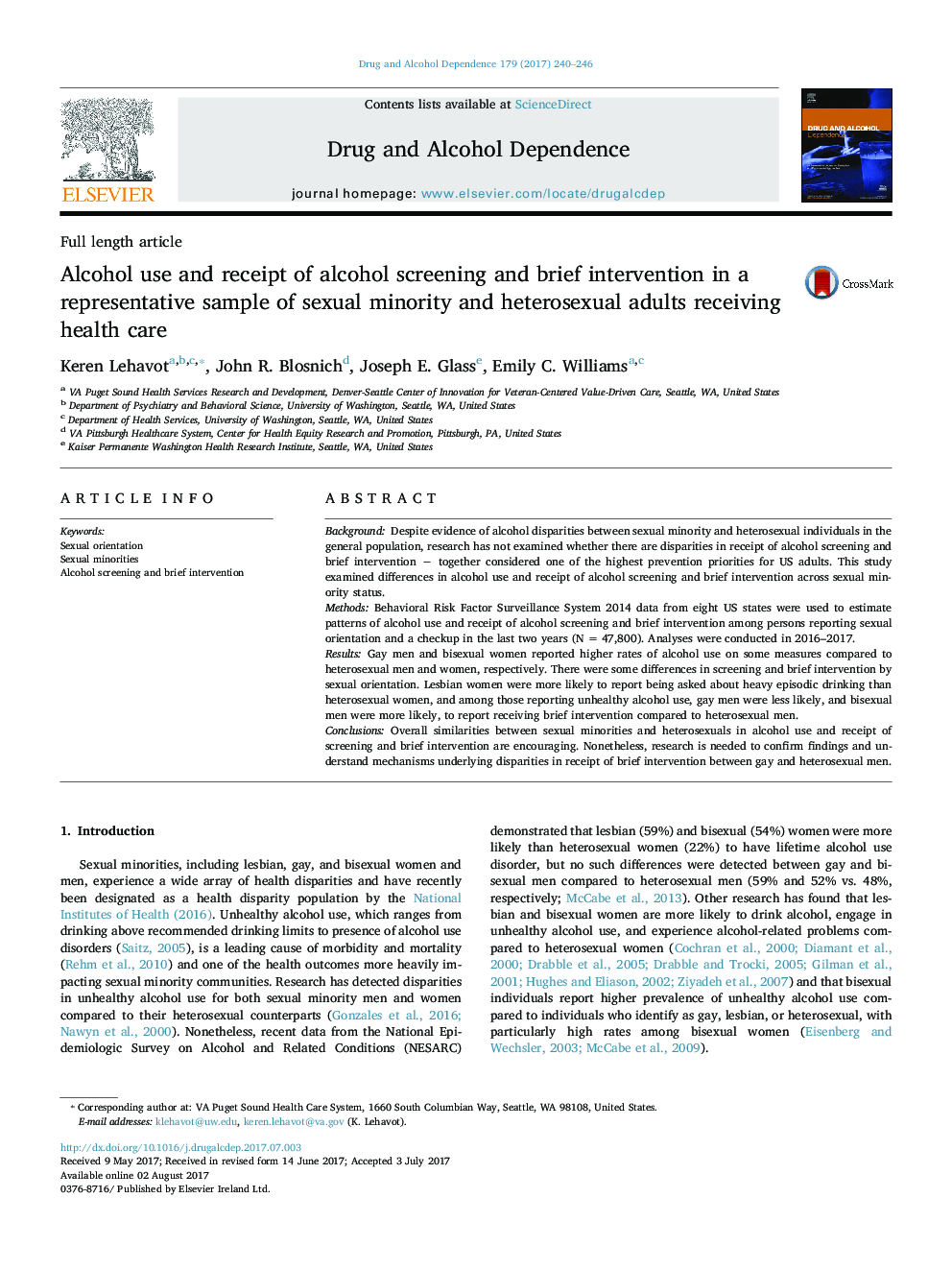| Article ID | Journal | Published Year | Pages | File Type |
|---|---|---|---|---|
| 5119952 | Drug and Alcohol Dependence | 2017 | 7 Pages |
â¢We examined alcohol use, screening, and brief intervention by sexual orientation.â¢Gay men reported greater alcohol use than heterosexual men.â¢Bisexual women had marginally higher unhealthy alcohol use than heterosexual women.â¢Rates of screening and brief intervention were similar by sexual orientation.â¢Gay men with unhealthy alcohol use were less likely to receive brief intervention.
BackgroundDespite evidence of alcohol disparities between sexual minority and heterosexual individuals in the general population, research has not examined whether there are disparities in receipt of alcohol screening and brief intervention â together considered one of the highest prevention priorities for US adults. This study examined differences in alcohol use and receipt of alcohol screening and brief intervention across sexual minority status.MethodsBehavioral Risk Factor Surveillance System 2014 data from eight US states were used to estimate patterns of alcohol use and receipt of alcohol screening and brief intervention among persons reporting sexual orientation and a checkup in the last two years (NÂ =Â 47,800). Analyses were conducted in 2016-2017.ResultsGay men and bisexual women reported higher rates of alcohol use on some measures compared to heterosexual men and women, respectively. There were some differences in screening and brief intervention by sexual orientation. Lesbian women were more likely to report being asked about heavy episodic drinking than heterosexual women, and among those reporting unhealthy alcohol use, gay men were less likely, and bisexual men were more likely, to report receiving brief intervention compared to heterosexual men.ConclusionsOverall similarities between sexual minorities and heterosexuals in alcohol use and receipt of screening and brief intervention are encouraging. Nonetheless, research is needed to confirm findings and understand mechanisms underlying disparities in receipt of brief intervention between gay and heterosexual men.
